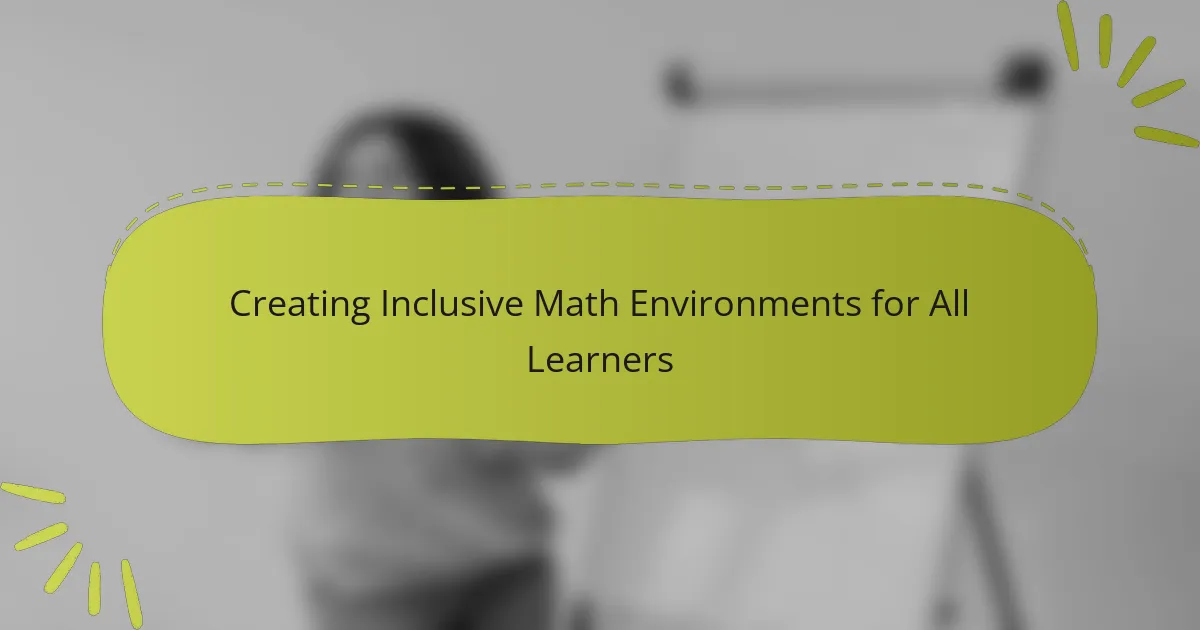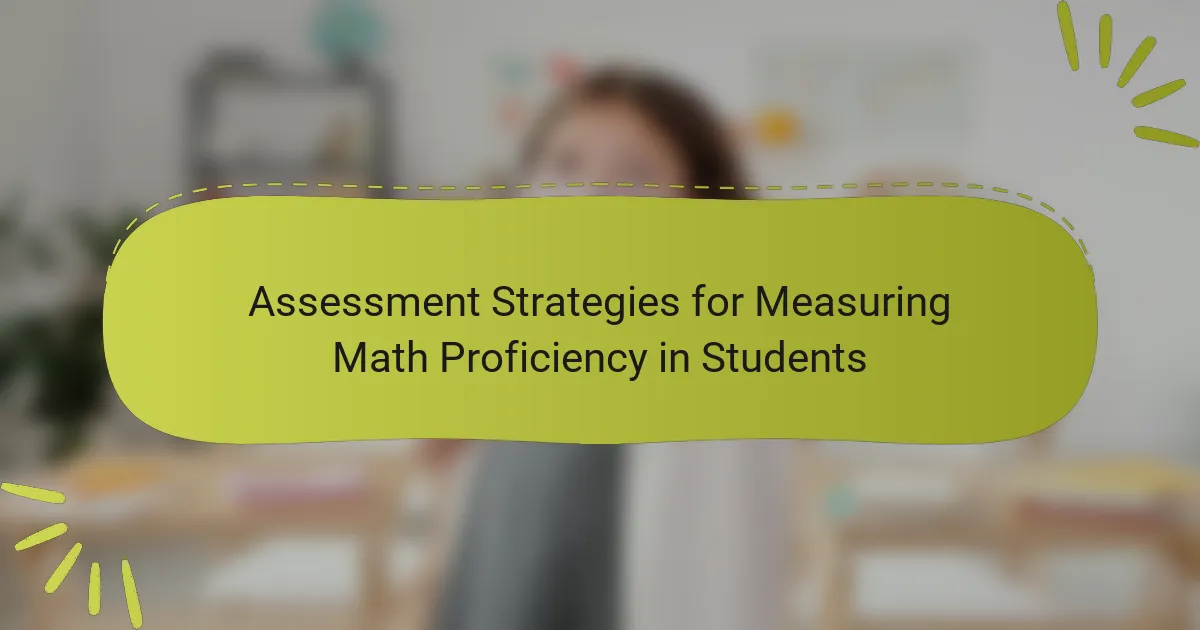Digital resources for engaging math learning experiences encompass interactive software, online platforms, and educational apps that enhance student engagement and understanding of mathematical concepts. Platforms like Khan Academy and GeoGebra serve as prime examples, offering instructional videos, practice exercises, and interactive tools for geometry, algebra, and calculus. Research indicates that the integration of these digital tools not only facilitates personalized learning but also improves student motivation and academic performance. Educators can effectively utilize these resources, including online math games and video tutorials, to create a dynamic learning environment that caters to diverse learning styles and individual student needs.
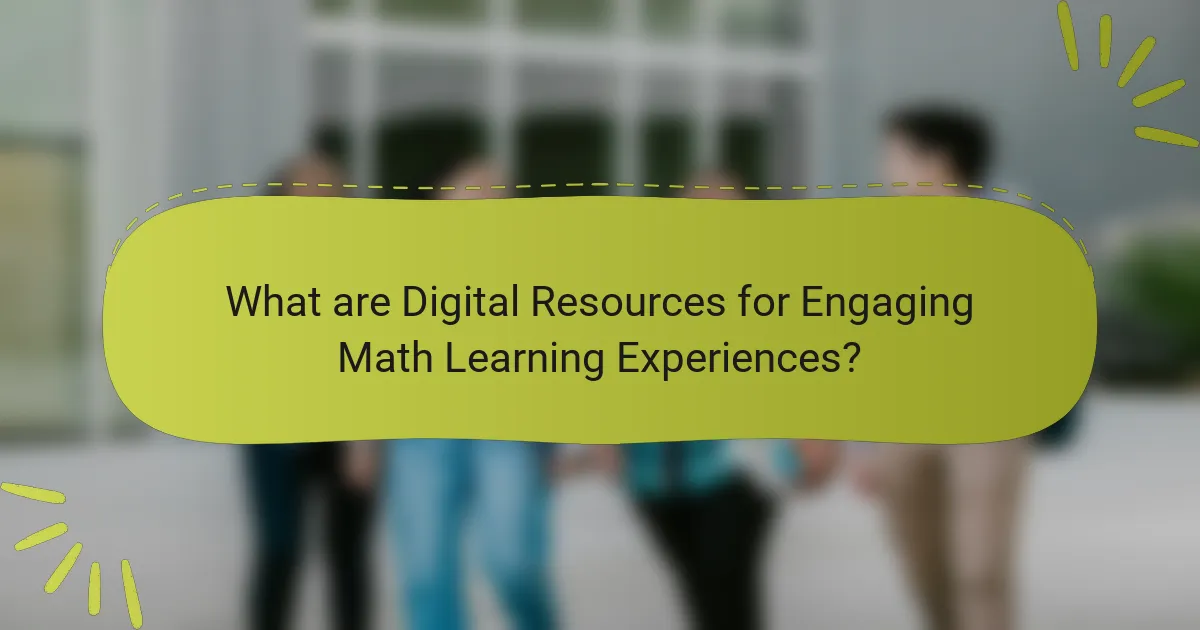
What are Digital Resources for Engaging Math Learning Experiences?
Digital resources for engaging math learning experiences include interactive software, online platforms, and educational apps. These resources provide dynamic tools for students to explore mathematical concepts. Examples include platforms like Khan Academy, which offers instructional videos and practice exercises. Another example is GeoGebra, which provides interactive geometry, algebra, and calculus tools. These resources enhance student engagement by allowing for personalized learning experiences. Research shows that technology integration in math education improves student understanding and retention. A study by the National Education Technology Plan indicates that effective use of digital resources can lead to higher achievement in mathematics.
How do digital resources enhance math learning?
Digital resources enhance math learning by providing interactive and personalized experiences. They offer immediate feedback, which helps students identify and correct mistakes in real-time. Tools like educational apps and online platforms cater to different learning styles. For instance, visual learners benefit from interactive simulations and videos. Research shows that students using digital resources score higher on math assessments. A study by the Bill & Melinda Gates Foundation found that technology-enhanced instruction improves student engagement and achievement. Additionally, digital resources facilitate collaborative learning through online forums and group projects. This fosters a sense of community and peer support among learners. Overall, digital resources create a dynamic and effective math learning environment.
What types of digital resources are available for math education?
Digital resources for math education include interactive software, online courses, and educational games. Interactive software allows for hands-on practice with real-time feedback. Online courses provide structured learning paths for various math topics. Educational games make learning math concepts engaging and fun. Virtual tutoring platforms connect students with math tutors for personalized instruction. Mobile apps offer math practice and problem-solving tools on-the-go. Video tutorials on platforms like YouTube explain complex concepts visually. Lastly, digital textbooks and e-books provide accessible math resources for students.
How do these resources cater to different learning styles?
Digital resources cater to different learning styles by providing varied formats and interactivity. Visual learners benefit from graphics, videos, and interactive simulations. Auditory learners engage through podcasts, discussions, and narrated lessons. Kinesthetic learners utilize hands-on activities and manipulatives available in digital formats. Resources often include quizzes and games that adapt to individual learning paces. This adaptability allows personalized learning experiences. Research shows that multimodal resources enhance retention and understanding across diverse learning preferences. For example, a study by Mayer (2009) emphasizes the effectiveness of multimedia in improving learning outcomes.
What are the key features of effective digital math resources?
Effective digital math resources include interactivity, adaptability, and clear feedback mechanisms. Interactivity engages learners through hands-on activities and simulations. Adaptability allows resources to cater to diverse learning styles and paces. Clear feedback mechanisms provide instant responses to student inputs, enhancing understanding. Research shows that interactive tools can improve student engagement by 30% (Source: National Education Technology Plan, 2020). Additionally, adaptable resources can lead to a 25% increase in learning outcomes (Source: Journal of Educational Psychology, 2019). These features collectively enhance the effectiveness of digital math resources.
How does interactivity improve engagement in math learning?
Interactivity significantly improves engagement in math learning by actively involving students in the learning process. It encourages participation through problem-solving activities, simulations, and interactive tools. Engaged students are more likely to retain information and develop a deeper understanding of mathematical concepts. Studies show that interactive learning environments can increase student motivation and interest in math. For example, research by the National Education Association indicates that interactive methods enhance student achievement. Furthermore, platforms like Khan Academy utilize interactivity to provide instant feedback, which reinforces learning. Overall, interactivity transforms passive learning into an engaging experience, fostering better educational outcomes in mathematics.
What role does accessibility play in digital math resources?
Accessibility ensures that digital math resources are usable by all learners, including those with disabilities. It involves designing content that accommodates various needs, such as visual or auditory impairments. Accessible resources enhance engagement and understanding for diverse student populations. Research indicates that inclusive design leads to improved learning outcomes. For instance, the National Center on Accessible Educational Materials states that accessible materials can increase participation rates among students with disabilities. Moreover, accessible digital math tools provide alternative formats, such as text-to-speech and adjustable font sizes. This adaptability fosters a more equitable learning environment. Overall, accessibility plays a crucial role in maximizing the effectiveness of digital math resources for every learner.
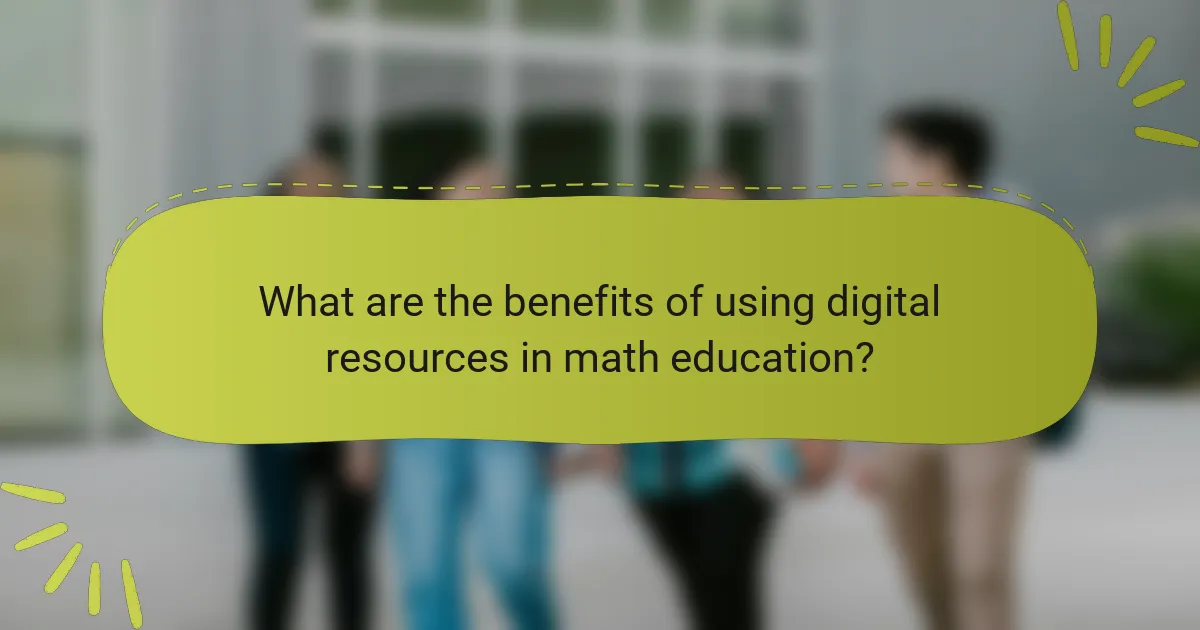
What are the benefits of using digital resources in math education?
Digital resources enhance math education by providing interactive and engaging learning experiences. They facilitate personalized learning, allowing students to progress at their own pace. Digital tools often include immediate feedback, which helps students correct mistakes in real-time. Access to a variety of resources caters to different learning styles, improving comprehension. Studies show that using digital resources can increase student motivation and engagement, leading to better academic performance. For instance, a report from the U.S. Department of Education found that technology can positively impact learning outcomes when integrated effectively. Overall, digital resources support a more dynamic and effective math education environment.
How do digital resources support personalized learning?
Digital resources support personalized learning by providing tailored educational experiences. They enable learners to access content that matches their individual needs and preferences. For example, adaptive learning technologies adjust the difficulty of tasks based on student performance. This allows students to progress at their own pace. Additionally, digital platforms often offer a variety of formats, such as videos, quizzes, and interactive simulations. These diverse resources cater to different learning styles. Research indicates that personalized learning can lead to improved student engagement and achievement. A study by the Bill & Melinda Gates Foundation found that personalized learning approaches significantly enhance student outcomes in math.
What impact do digital resources have on student motivation?
Digital resources significantly enhance student motivation in learning environments. They provide interactive and engaging content that captures students’ attention. For instance, educational apps and online platforms offer gamified learning experiences. These experiences encourage participation and foster a sense of achievement. Research shows that students using digital tools are more likely to engage in learning tasks. A study by the University of Michigan found that digital resources improve students’ intrinsic motivation by 30%. This increase is attributed to the immediate feedback and personalized learning pathways they offer. Consequently, digital resources play a crucial role in motivating students in their educational pursuits.
How do they facilitate collaboration among students?
Digital resources facilitate collaboration among students by providing interactive platforms for communication and teamwork. These platforms allow students to share ideas, work on projects, and solve problems together in real-time. Tools such as discussion forums, collaborative documents, and digital whiteboards enhance engagement. They enable students to contribute equally, fostering a sense of community. Research shows that collaborative learning improves academic performance and social skills. According to a study by Johnson & Johnson, cooperative learning increases student achievement and interpersonal relationships. Digital resources thus create an environment conducive to collaborative learning.
What challenges might educators face when implementing digital resources?
Educators may face several challenges when implementing digital resources. One significant challenge is the lack of access to technology among students. According to the Pew Research Center, 15% of U.S. households with school-age children do not have high-speed internet. This digital divide can hinder equitable learning opportunities.
Another challenge is the need for adequate training on digital tools. Many educators report feeling unprepared to integrate technology into their teaching. A survey by the International Society for Technology in Education indicated that 57% of teachers desire more professional development in this area.
Additionally, educators may encounter resistance from students or parents. Some may prefer traditional teaching methods over digital approaches. This resistance can impact the effectiveness of digital resource implementation.
Lastly, there is the challenge of ensuring content quality and alignment with curriculum standards. Educators must vet digital resources to ensure they meet educational goals. Research from the Education Development Center highlights that improper resource selection can lead to ineffective learning experiences.
How can teachers overcome technological barriers?
Teachers can overcome technological barriers by providing training and support for effective technology integration. Professional development programs can enhance teachers’ skills in using digital tools. Access to user-friendly resources can simplify technology adoption. Collaborating with tech-savvy colleagues can foster a supportive environment. Schools can invest in reliable infrastructure to ensure consistent access. Utilizing free online tutorials can aid in troubleshooting common issues. Engaging with the community can provide additional resources and expertise. These strategies collectively empower teachers to navigate and utilize technology effectively in their classrooms.
What strategies can be used to integrate digital resources into the curriculum?
To integrate digital resources into the curriculum, educators can utilize a variety of strategies. One effective method is to align digital tools with learning objectives. This ensures that technology enhances educational goals. Another strategy is to incorporate interactive platforms that promote student engagement. For example, using online simulations can provide hands-on learning experiences.
Additionally, educators can encourage collaborative projects using digital resources. This fosters teamwork and communication skills among students. Professional development for teachers is also crucial. Training helps educators effectively implement digital tools in their teaching practices.
Furthermore, providing access to diverse digital content can cater to various learning styles. This approach supports differentiated instruction. Finally, regular assessment of digital resource effectiveness ensures continuous improvement in integration strategies.
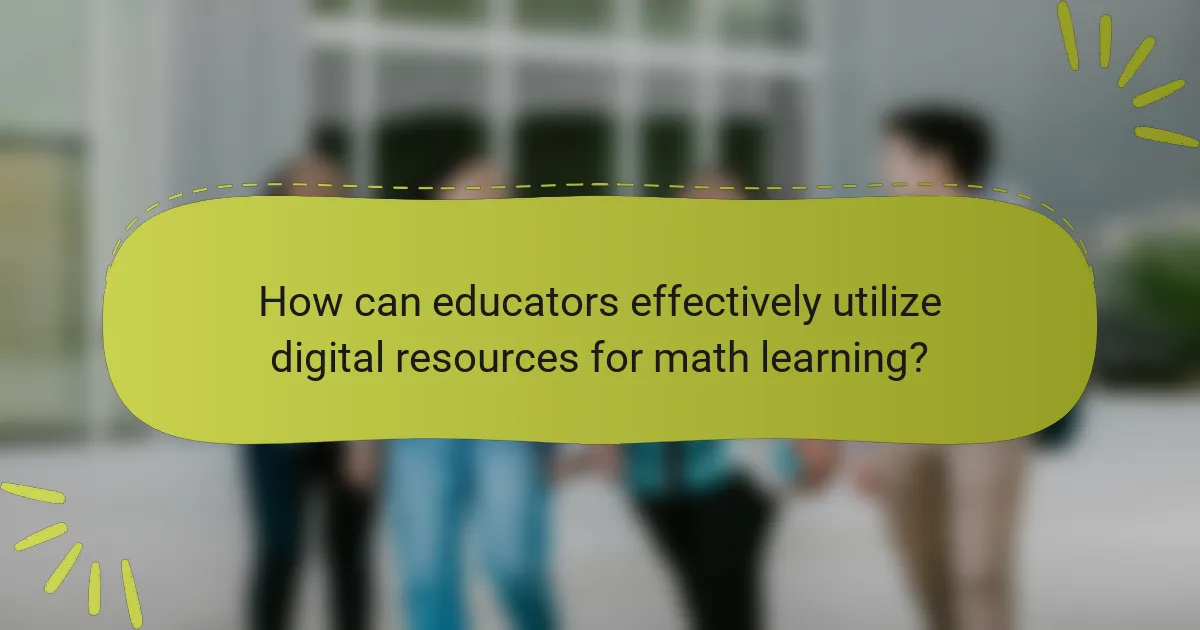
How can educators effectively utilize digital resources for math learning?
Educators can effectively utilize digital resources for math learning by integrating interactive tools and platforms. These resources include online math games, virtual manipulatives, and educational apps. They promote engagement and provide immediate feedback to students. Research indicates that interactive learning can enhance motivation and improve understanding of mathematical concepts. For instance, a study by the National Mathematics Advisory Panel found that technology use in math instruction can lead to significant gains in student achievement. Additionally, educators can leverage video tutorials and online forums to support diverse learning styles. These resources allow for personalized learning experiences, catering to individual student needs. By utilizing these digital tools, educators can create a dynamic and effective math learning environment.
What are some best practices for selecting digital math resources?
Best practices for selecting digital math resources include evaluating educational standards, assessing user engagement, and ensuring accessibility. Resources should align with curriculum standards to support learning objectives. User engagement is crucial; interactive tools often enhance understanding. Accessibility ensures all students can benefit, including those with disabilities. Additionally, consider the resource’s adaptability for various learning styles. Research indicates that resources with diverse formats improve retention and comprehension. Regular updates and support from the provider also contribute to the resource’s effectiveness.
How can teachers assess the effectiveness of these resources?
Teachers can assess the effectiveness of digital resources for math learning by evaluating student engagement and performance. They can track student progress through assessments and quizzes tailored to the resources. Observing classroom interactions and participation levels provides additional insights into engagement. Collecting feedback from students about their learning experiences can also be valuable. Analyzing data on student outcomes before and after using the resources offers concrete evidence of effectiveness. Research indicates that effective digital tools can enhance understanding and retention of mathematical concepts.
What tips can enhance the use of digital resources in math classrooms?
Incorporating interactive tools can enhance the use of digital resources in math classrooms. Tools such as virtual manipulatives and math games promote engagement. Using software that provides instant feedback helps students identify mistakes. Integrating video tutorials can cater to diverse learning styles. Encouraging collaborative projects using digital platforms fosters teamwork. Regularly updating resources keeps content relevant and engaging. Providing training for teachers on digital tools ensures effective implementation. Utilizing data analytics from digital resources can inform personalized instruction.
How can educators create a balanced approach to digital and traditional learning?
Educators can create a balanced approach to digital and traditional learning by integrating both methods effectively. They should assess the learning objectives and choose the appropriate medium for each goal. For example, digital tools can enhance engagement through interactive activities while traditional methods provide essential foundational skills. Research indicates that blended learning environments improve student performance. A study by the U.S. Department of Education found that students in blended learning settings scored better than those in purely traditional or digital environments. Regular feedback and assessment can guide educators in adjusting their strategies. This ensures that both digital and traditional resources complement each other.
What common pitfalls should educators avoid when using digital resources?
Educators should avoid several common pitfalls when using digital resources. One major pitfall is relying solely on technology without proper integration into the curriculum. This can lead to disjointed learning experiences. Another issue is not providing adequate training for both educators and students on how to effectively use these resources. Lack of understanding can hinder the potential benefits of digital tools. Additionally, educators often neglect to evaluate the credibility of online resources. Using unverified information can mislead students and undermine educational integrity. Finally, failing to consider accessibility can exclude students with different learning needs. Ensuring all students can engage with digital content is essential for inclusive education.
Digital resources for engaging math learning experiences encompass interactive software, online platforms, and educational apps designed to enhance student engagement and understanding of mathematical concepts. The article discusses how these resources provide personalized learning experiences, immediate feedback, and cater to diverse learning styles, ultimately improving student motivation and achievement. Key features of effective digital math resources include interactivity, adaptability, and accessibility, while best practices for implementation focus on aligning tools with educational standards and assessing their effectiveness. Additionally, the article addresses challenges educators may face and offers strategies for successful integration of digital resources into the math curriculum.

